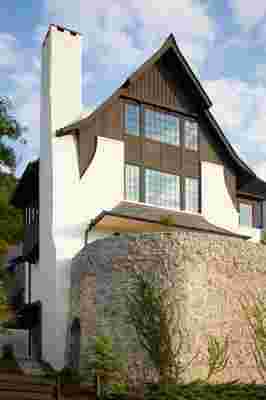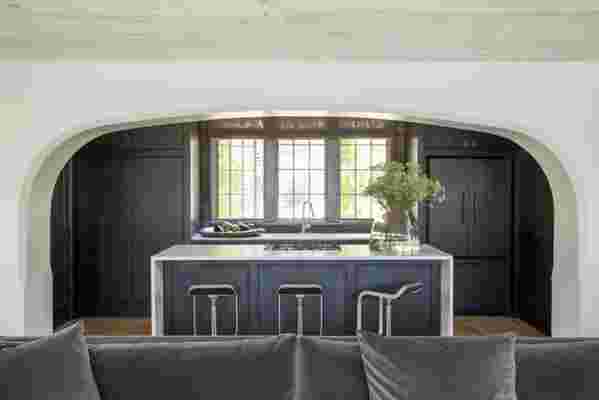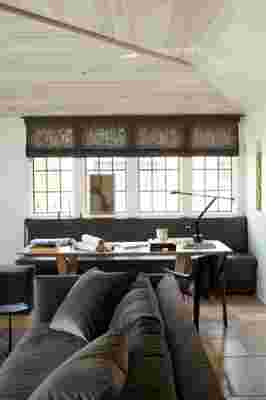So much about designing a house rests on the execution of the technical details: the application of materials, the optimization of the location, the building of the structure itself. But on a conceptual level, creating a residence becomes an exercise in existentialism, with each aesthetic decision amounting to an interpretation of the cultural meanings of home. The significance wasn’t lost on Alabama architect Jeff Dungan, who has spent his 25-year career discerning the needs of others but finally did enough soul-searching to accommodate his own.
“When you’re an architect or designer, you have so many different ideas of what home is and the feeling you’re trying to communicate,” says Dungan, who shares many of his insights in a new book called The Nature of Home: Creating Timeless Houses (Rizzoli, September 2018). “You have to ask yourself, ‘What do you want?’; for me it was a self-realization that surprised me.”

The house’s exterior unites disparate elements—a stone wall that nods to its Red Mountain location, where the city’s steel industrialists once lived, and the English Gothic derivatives that punctuate much of Dungan’s work—with a contrasting color palette derived from Benjamin Moore’s Decorator’s White and a custom blend of Jet Black and Dragon’s Breath. “It’s a fun laboratory from a design perspective,” he says. “I got to try details I wouldn’t get to do on other people’s homes.”
His dream home turned out to be a light-filled aerie overlooking Birmingham, where he could experiment with bold choices while paying homage to the city’s industrial beginnings. Though the house is nestled on the slopes of Red Mountain, named for its rich iron-ore deposits and the place where many of the region’s steel industrialists once dwelled, the historical resonance runs deeper than the three-bedroom structure’s geographical footprint. As a nod to Birmingham’s 19th-century mining past, Dungan incorporated steel doors and fluted glass, brass and bronze finishes that would patina over time, and a moody palette that references blacksmiths and iron forges. One anachronistic detail that somehow manages to work: subtle tributes to the English Gothic style and Arts and Crafts movement, including arched ceilings and glass rondels in the master bath.
But far from a gloomy den—or any cookie-cutter gracious Southern stereotypes—the house is bright and breezy, not least in the living room, where whitewashed wood and concrete pavers meet sculpturally carved walls that reveal light through negative space. “I’m a closet modernist and natural-light freak,” Dungan says of the room’s oval cutout, noting that the house is a perfect square turned to the sun at a 45-degree angle to disperse light in different rooms at different times of day. “It’s almost like living in a sundial,” he says.
For contrast, the kitchen takes a dramatic turn with ebonized cabinetry and sleek white marble cascading over a center island, almost begging for a reaction. “Great architecture exacts an emotional response in our hearts—that’s what makes it meaningful and memorable,” says Dungan. Here, the interplay of elements—inky hues, clean lines, plus low-slung modern furnishings and upholstery curated with help from designers Betsy Brown and Grant Trick, respectively—results in a surprisingly nuanced home that has become the backdrop for a life well lived.


RELATED: An Understated Beach House That Artfully Breaks Convention in the Hamptons
